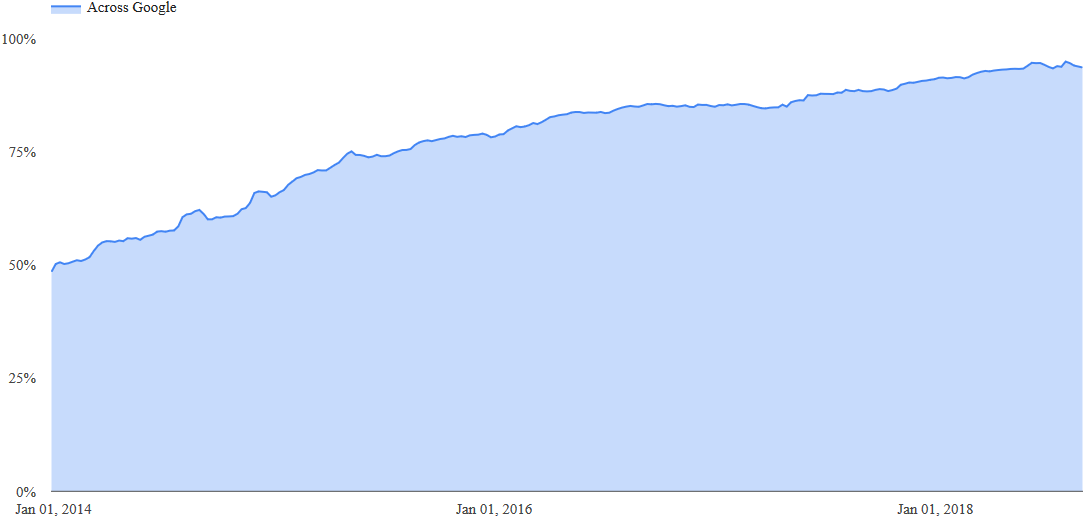HTTPS helps keep your browsing safe by securely connecting your browser or app with the websites you visit. HTTPS relies on encryption technology—SSL or TLS—to secure these connections. This report provides data on the status of HTTPS adoption and usage at Google and across the web.
Encrypted traffic across Google
Security is a top priority at Google. We are investing and working to make sure that our sites and services provide modern HTTPS by default. Our goal is to achieve 100% encryption across our products and services. The chart below shows how we're doing across Google. For more details on the data, please visit Google FAQ .
Encryption by product at Google
This chart provides a snapshot of encrypted traffic for several products. Numbers are based on the majority of Google traffic for a given product. We continue to work through the technical barriers that make it difficult to support encryption on some of our products. This chart will change over time to reflect product developments.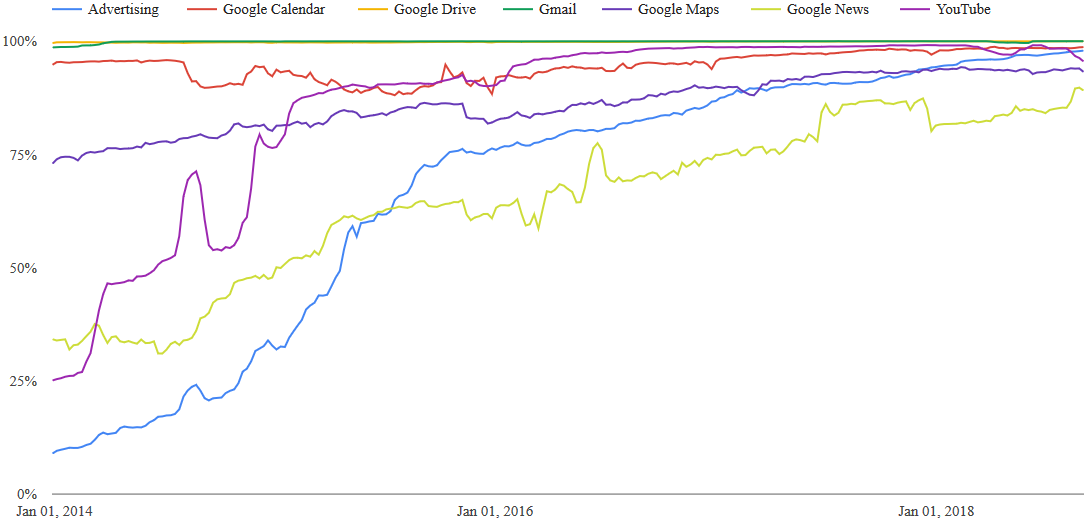
Encrypted requests to Google worldwide
The volume of encrypted web traffic to Google varies by country. This chart shows the 10 countries with the highest volume of encrypted web traffic by percent of traffic that Google receives. The variation between countries is due to a number of factors, including the types of devices used in that country, as well as the availability of software that can support modern encryption technologies like TLS.
Overview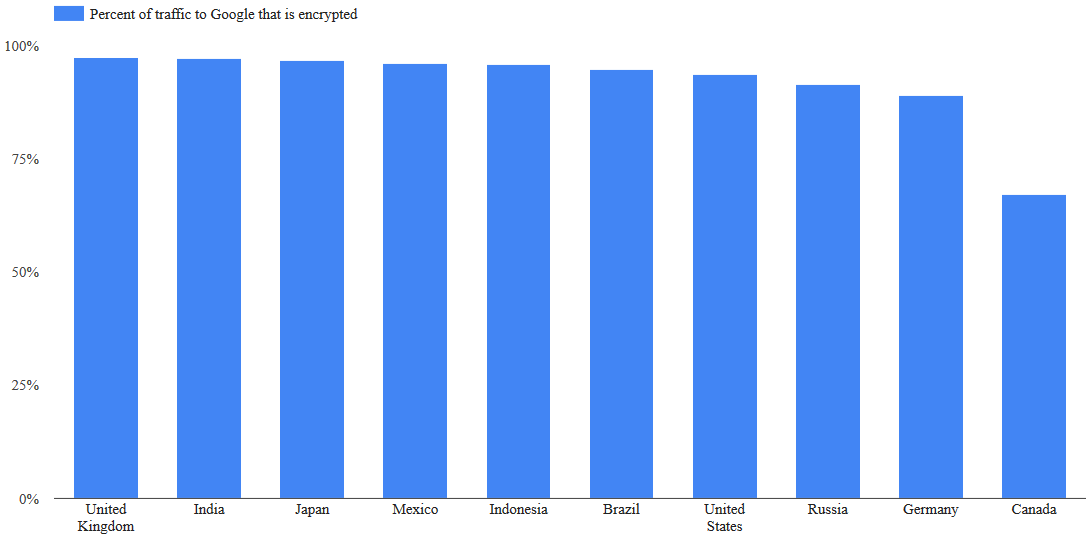
Unencrypted user traffic to Google by device type
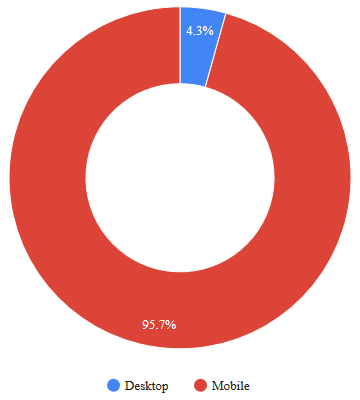 Mobile devices account for the vast majority of unencrypted end user traffic that originates from a given set of surveyed Google services. Some older devices cannot support modern encryption, standards, or protocols. Unfortunately, these devices may no longer support software updates and, as a result, may never support encryption.
Mobile devices account for the vast majority of unencrypted end user traffic that originates from a given set of surveyed Google services. Some older devices cannot support modern encryption, standards, or protocols. Unfortunately, these devices may no longer support software updates and, as a result, may never support encryption.
Encryption keeps you safe
HTTPS web connections protect against eavesdroppers, man-in-the-middle attacks, and hijackers who attempt to spoof a trusted website. In other words, encryption thwarts interception of your information and ensures the integrity of information that you send and receive. Because older hardware and software often don’t support modern encryption technologies, users of these devices may be more vulnerable to security threats.
Obstacles to encryption
Several technical and political challenges stand in the way of achieving full encryption of all web traffic. For example, certain countries and organizations block or otherwise degrade HTTPS traffic. Some companies and organizations lack the technical resources to implement HTTPS or don’t see it as a priority. At Google, certificate management can be challenging for products like Blogger, where a user’s non-Google domain can be used and may not support HTTPS.
HTTPS Encryption by Chrome platform
Since early 2015, we have been able to measure the prevalence of HTTPS connections thanks to Chrome users who choose to share usage statistics. The graphs below show the growth in HTTPS usage across platforms and countries. Desktop users load more than half of the pages they view over HTTPS and spend two-thirds of their time on HTTPS pages. HTTPS is less prevalent on sites accessed on mobile devices, but there is still an upward trend in encryption usage there.
Percentage of pages loaded over HTTPS in Chrome by platform
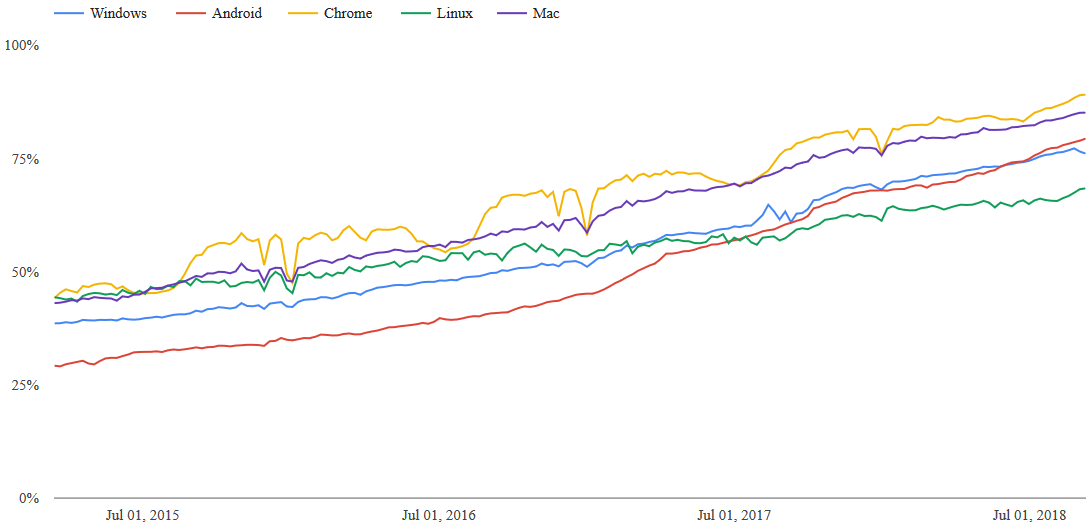
Fragment navigations, history push state navigations, and all schemes besides HTTP/HTTPS (including new tab page navigations) are not included.
Percentage of HTTPS browsing time by Chrome platform
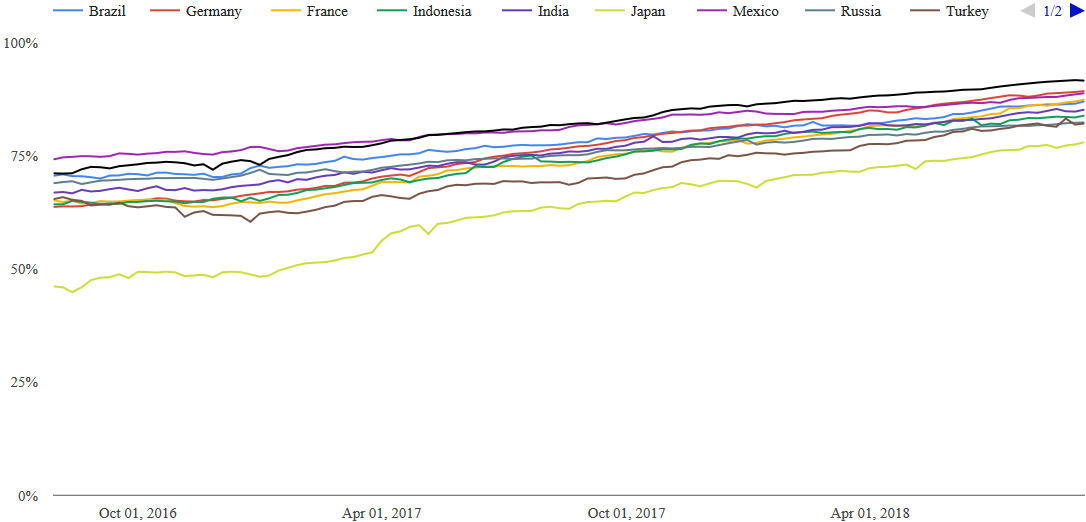
If a user has multiple tabs open in Chrome, metrics come only from the active foreground tab. Schemes other than HTTP or HTTPS (such as chrome://) are not included.
HTTPS usage in Chrome worldwide
HTTPS usage in Chrome is growing faster in some countries than others. For example, the prevalence of HTTPS has increased quickly in Russia compared to Japan, which has seen slower growth of HTTPS usage.
Learn about how we select these countries
Percentage of pages loaded over HTTPS in Chrome by country
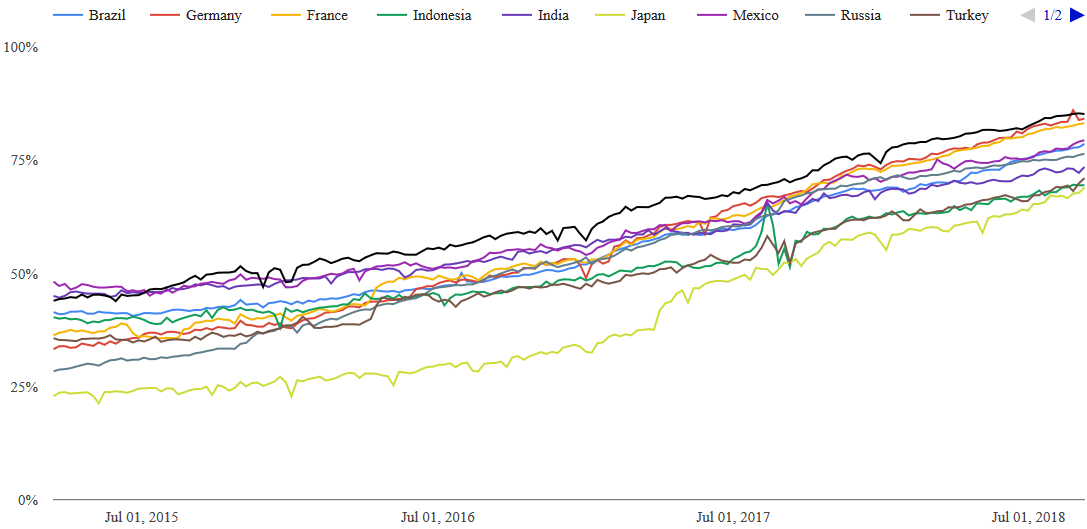
Fragment navigations, history push state navigations, and all schemes besides HTTP/HTTPS (including new tab page navigations) are not included.
Percentage of HTTPS browsing time in Chrome by country

If a user has multiple tabs open in Chrome, metrics come only from the active foreground tab. Schemes other than HTTP or HTTPS (such as chrome://) are not included.

